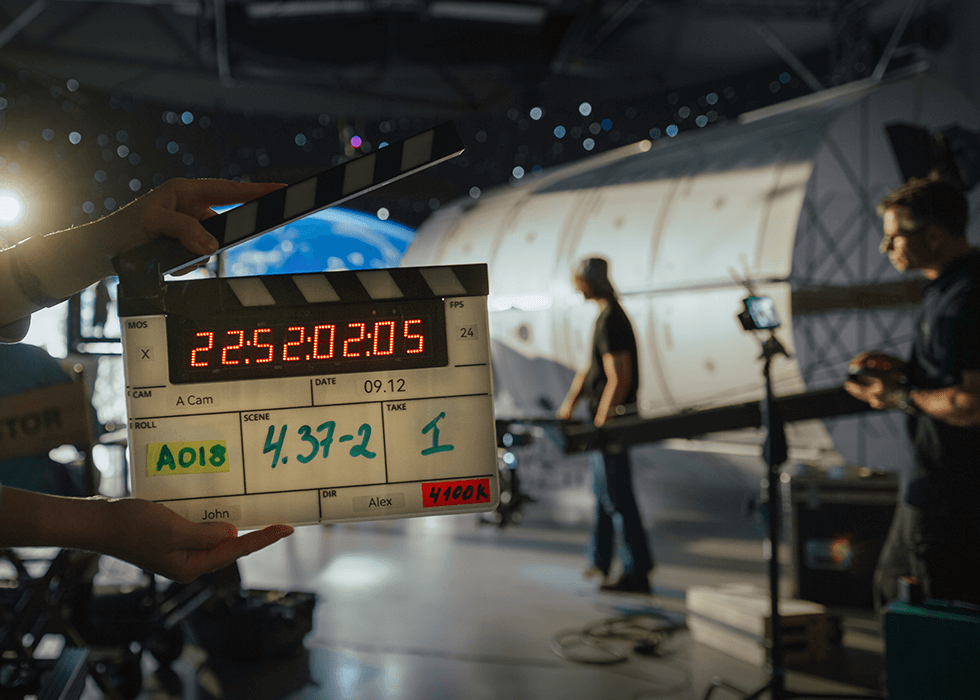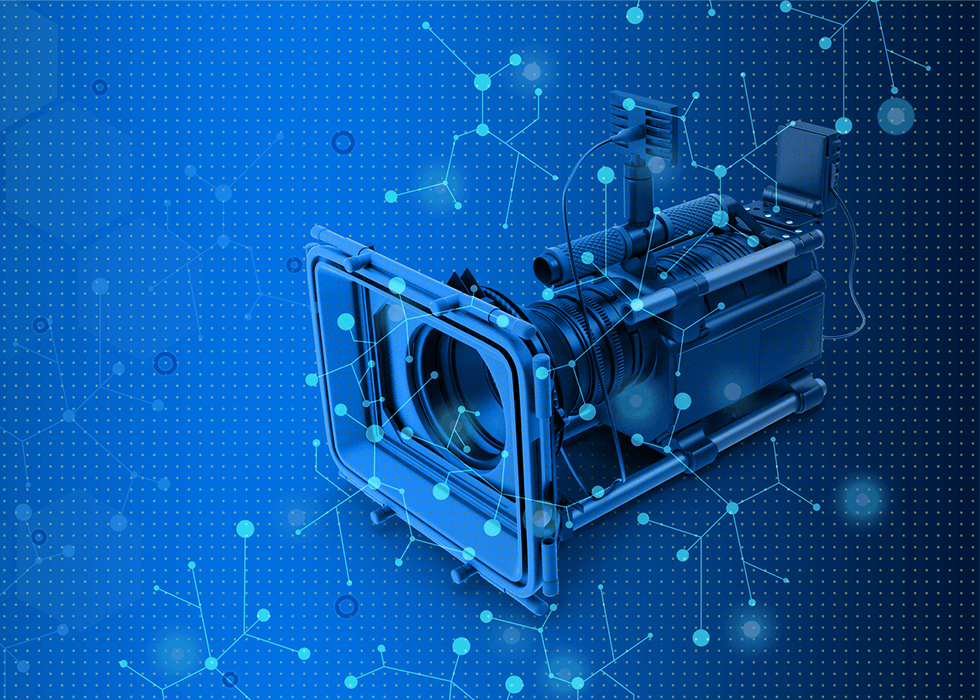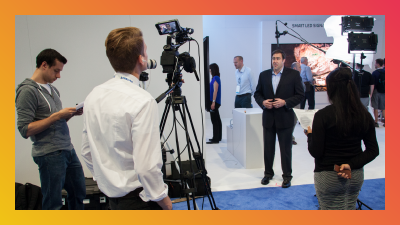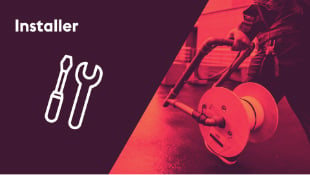
Beginner's Guide to Virtual Production Platforms
Virtual production is a rapidly evolving technique that merges the physical and digital worlds in real time; it fundamentally transforms how films, television shows, and media content are created and delivered to the end user. By integrating cutting-edge technologies like real-time rendering engines, LED screens, and motion capture systems, virtual production allows filmmakers to visualize and interact with computer-generated environments during filming.
This approach provides greater creative control, shortens production times, and reduces overall costs. It is an increasingly attractive choice for large studios that want to avoid cost overruns and independent creators who usually work on tighter budgets.
What Is Virtual Production?
Large LED walls are at the heart of virtual production, often called "LED volumes"or “virtual production stages,” which display high-resolution, computer-generated backgrounds onto LED walls. LED volumes allow filmmakers to visualize and adjust scenes in real-time, offering unparalleled flexibility in set design and cinematography while allowing actors and directors to interact with the virtual environment during filming, enhancing their performance and creative decision-making.
These backgrounds are rendered in real-time using game engines like Unreal Engine. They respond dynamically to camera movements and lighting changes, allowing filmmakers to capture their final shots in-camera.
This methodology has become a game-changer in modern media production. It first garnered widespread attention with its use in The Mandalorian, a Disney+ series showcasing vast, otherworldly settings created through Unreal Engine and displayed on LED walls. Using virtual production, scenes that looked like they were filmed in exotic or alien locations could be shot without leaving the soundstage. The result was a more controlled, efficient, and cost-effective production process.
Learn More
What Are Virtual Production Platforms?
Virtual production platforms are integrated software and hardware ecosystems enabling the real-time blending of virtual elements with live-action footage. These platforms include a variety of components working together:
- Real-Time Rendering Engines: Software such as Unreal Engine or Unity can instantly generate high-quality 3D graphics.
- LED Volumes or Green Screens: Large-scale LED walls or traditional green screens that act as dynamic and free-flow backdrops.
- Camera Tracking Systems: Tools that track the movement and position of cameras to align the virtual environment’s perspective accurately.
- Motion Capture Systems: Equipment that records actors’ movements and facial expressions, allowing creators to animate digital characters or avatars.
The main difference between virtual production and traditional production is immediacy. Traditional production often requires a lengthy post-production phase to composite effects and adjust scenes. Virtual production, on the other hand, enables directors, cinematographers, and visual effects teams to collaborate on a real-time version of the final product and make instant creative decisions and changes.
Virtual production platforms streamline the entire production pipeline by allowing visual effects to be rendered live, saving time and money by reducing back-and-forth between departments. Additionally, virtual production platforms allow for better planning and visualization during pre-production, improved performance capture during production, and fewer surprises during post-production.
The benefits are numerous: faster turnaround times, cost savings from fewer location shoots and reshoots, and an overall smoother workflow. It also enhances storytelling by allowing greater experimentation and immediate feedback.
Key Technologies Involved in Virtual Production
Real-Time Rendering Engines
At the heart of virtual production are real-time rendering engines. Unreal Engine and Unity are two of the most popular platforms that enable instant rendering of complex 3D environments. These engines allow for high-resolution textures, dynamic lighting, and advanced physics simulations, all of which contribute to a more immersive experience. Because they render scenes instantaneously, directors and cinematographers can immediately adjust lighting, angles, and environmental details while the scene is filmed.
Motion Capture Systems
Motion capture technology records actors' movements to animate digital characters in real time. These systems use specialized suits fitted with sensors that track body movement and facial expressions. The captured data is then applied to virtual avatars or CGI characters. This allows actors to see how their digital counterparts perform in the scene, helping to synchronize performances and enhance the realism of the final footage.
Augmented Reality (AR) and Virtual Reality (VR) Technologies
AR and VR add immersive elements to the virtual production process. In pre-production, VR can be used to scout virtual sets, rehearse scenes, or design environments. AR can project interactive elements into the physical set during production, allowing actors and directors to interact with virtual props or characters. These technologies help visualize scenes more effectively, improving performance and storytelling.

Benefits of Using Virtual Production Platforms
Creative Flexibility
Virtual production opens the door to nearly limitless creative possibilities. The availability of physical locations or set designs no longer limits directors. Does the moviemaker want to shoot a scene on a distant planet or in a historical setting such as the Dark Ages or ancient Egypt? Virtual production makes it possible to do so. This flexibility allows filmmakers to experiment with different looks, lighting setups, and camera movements on the fly. The ability to see and modify scenes in real time encourages spontaneous creative decisions, which can lead to more compelling storytelling.
Cost and Time Efficiency
One of the most compelling reasons to adopt virtual production is the significant savings in time and budget. Traditional filmmaking often involves expensive travel, work visas when filming in different countries, location and construction permits, long setup times, delays, cost overruns due to unforeseen occurrences, including inclement weather, and extensive post-production work. With virtual production, all of this can be minimized or eliminated. Virtual sets are reusable and can be altered instantly, reducing the need for reshoots or additional shoots. The real-time rendering process also means many visual effects are completed during filming, shortening the post-production timeline.
Enhanced Collaboration
Virtual production promotes a more collaborative working environment. Since everyone involved in the production—directors, producers, set designers, cinematographers, and visual effects artists—can see the final result as it’s being created, they can provide input and make changes in real time. Remote collaboration is also easier, as cloud-based tools and real-time engines allow teams across different locations to work simultaneously on the same scenes. This leads to more cohesive results and a smoother production process overall.
Popular Virtual Production Platforms
Unreal Engine
Developed by Epic Games, Unreal Engine is arguably the most widely used virtual production platform. It offers powerful real-time rendering capabilities, a vast library of assets, and strong community support. It is especially popular for its photorealistic visuals and has been used in numerous high-profile productions.
Unity
Known for its user-friendly interface and flexibility, Unity is a strong contender in the virtual production space. While it’s traditionally been favored for game development, Unity has made major strides in film and television, offering live rendering and interactive storytelling tools.
Pixotope
Specifically designed for broadcast and live event production, Pixotope combines camera tracking, real-time graphics, and LED control into one seamless platform. It’s commonly used in sports broadcasts and live news segments.
Disguise
Often used in conjunction with LED volumes, Disguise provides solutions for managing and synchronizing content across multiple screens. It’s particularly valuable in stage performances, concerts, and experiential marketing.
Each platform offers unique strengths, and the choice often depends on the type of production and the crew's level of expertise.
Choosing the Right Virtual Production Platform
Factors to Consider
When selecting a virtual production platform, several factors should be taken into account:
- Project Requirements: Assess whether your project needs photorealistic environments, animated characters, or real-time effects. Not all platforms offer the same capabilities.
- Budget: Some platforms require significant investment in hardware and software licenses. Free versions (like Unreal Engine’s) may be suitable for smaller teams or independent creators.
- Team Expertise: Evaluate the skill level of your crew. Some platforms are more beginner-friendly than others.
- Hardware Compatibility: Ensure the platform integrates smoothly with your existing equipment.
Basic Setup and Requirements
Getting started with virtual production involves assembling the right tools:
- Hardware: You will need a powerful computer with a high-end GPU, cameras capable of outputting live video, LED walls or green screens, motion capture suits, and tracking systems.
- Software: Install a real-time engine like Unreal Engine or Unity, 3D modeling tools like Blender or Maya, and compositing software like After Effects or Nuke.
- Skills: It is essential to be well-versed in the subtleties of 3D animation, lighting, cinematography, and real-time rendering workflows. Fortunately, many platforms offer online training resources to help you get up to speed.
Future Trends in Virtual Production
Emerging Technologies
The virtual production landscape is rapidly advancing. Artificial intelligence is beginning to automate aspects of set design, character animation, and even scriptwriting. Machine learning algorithms can optimize rendering workflows and enhance motion capture accuracy. Meanwhile, volumetric capture—using multiple cameras to record a 3D performance from all angles—is poised to blur the line between virtual and reality even more.
Predicted Growth and Trends
Virtual production is expected to continue its explosive growth over the next decade. As the technology becomes more accessible, more creators (from big Hollywood studios to part-time YouTube content producers) will adopt these tools. Training programs and academic courses in virtual production are also on the rise, helping to meet the growing demand for skilled professionals in the field. As 5G networks and cloud computing expand, remote production will become more viable and widespread.
Virtual Production Platforms: The Takeaway
Virtual production platforms represent the future of filmmaking, offering unparalleled creative freedom, efficiency, cost-effectiveness, and collaboration. For beginners, stepping into this world might seem daunting initially, but today's tools and resources make it more accessible than ever. Whether you're producing a short film, a commercial, or a feature-length project, virtual production can transform your workflow and elevate your storytelling.
From real-time rendering engines to LED walls and motion capture technology, virtual production platforms bring the magic of digital storytelling into the hands of creators like never before. With the right platform, proper training, and a bit of imagination, you can turn any vision into reality.
Photo credit: Getty Images/gorodenkoff






.png?sfvrsn=519c2f3c_1)


